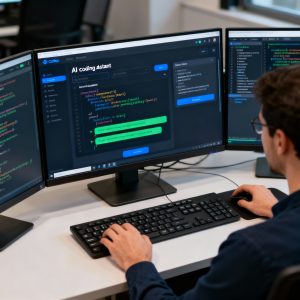Sony’s innovative approach to game quality assurance (QA) using artificial intelligence and machine learning has revolutionized the testing process for PlayStation games. This cutting-edge method, showcased through the development of Astro’s Playroom for PlayStation 5, demonstrates how automated QA processes can significantly enhance efficiency and accuracy in game testing.
The Dual Agent System
Sony’s QA automation relies on two key components: the Replay Agent and the Imitation Agent. These systems work in tandem to provide comprehensive testing coverage:
Replay Agent
The Replay Agent excels in replicating exact button combinations, making it ideal for:
- Navigating in-game UI and PS5 hardware menus
- Moving characters from spawn points to level transitions
- Testing scenarios where consistency is crucial
Imitation Agent
The Imitation Agent introduces variability to reflect real-world gameplay:
- Reproduces human-like play patterns with natural variance
- Utilizes machine learning models trained on human gameplay data
- Adapts to dynamic game elements such as enemy AI and camera control
Implementation and Challenges
Sony’s development team faced several challenges in implementing this AI-driven QA system:
- Universal Applicability: The system needed to work across various game genres without relying on game-specific tools.
- Cost-Effectiveness: Automation had to provide tangible benefits over traditional manual testing.
- User-Friendly Design: The system was designed to be accessible to non-technical staff for creating Imitation Agents and running simulations.
- Data Collection: Human testers played each section of Astro’s Playroom 10-20 times to create a representative sample for the machine learning model.
Advanced AI Techniques
To improve the effectiveness of their automated QA, Sony incorporated several sophisticated AI techniques:
LoFTR (Detector-Free Local Feature Matching)
This system helps the AI recognize identical scenes despite variations in camera angles or player positions, crucial for seamless transitions between Replay and Imitation Agents.
Class Balance in Training Data
To reflect human gameplay more accurately, Sony implemented Class Balance:
- Prioritizes infrequent but crucial actions (e.g., picking up essential items)
- Adjusts the influence of learning within the model
- Ensures the AI can navigate from failed states back to standard play
Benefits and Limitations
Sony’s research revealed both advantages and challenges in using AI for game testing:
Advantages:
- Significantly reduced testing time in some scenarios
- Earlier bug detection throughout the development cycle
- Improved overall game quality at release
Challenges:
- Some games required extensive training data for effective testing
- Changes in game parameters necessitated new machine learning models
- The system is not entirely autonomous and still requires human oversight
The Future of Game Development QA
While not replacing human testers entirely, Sony’s AI-driven QA process represents a significant step forward in game development:
- Allows for more frequent testing throughout development
- Enables earlier detection and fixing of bugs
- Streamlines the QA process, potentially reducing development costs and improving game quality
As this technology continues to evolve, it promises to reshape the landscape of game development, offering new tools for creators to deliver higher-quality gaming experiences to players worldwide.
Read more such articles from our Newsletter here.



